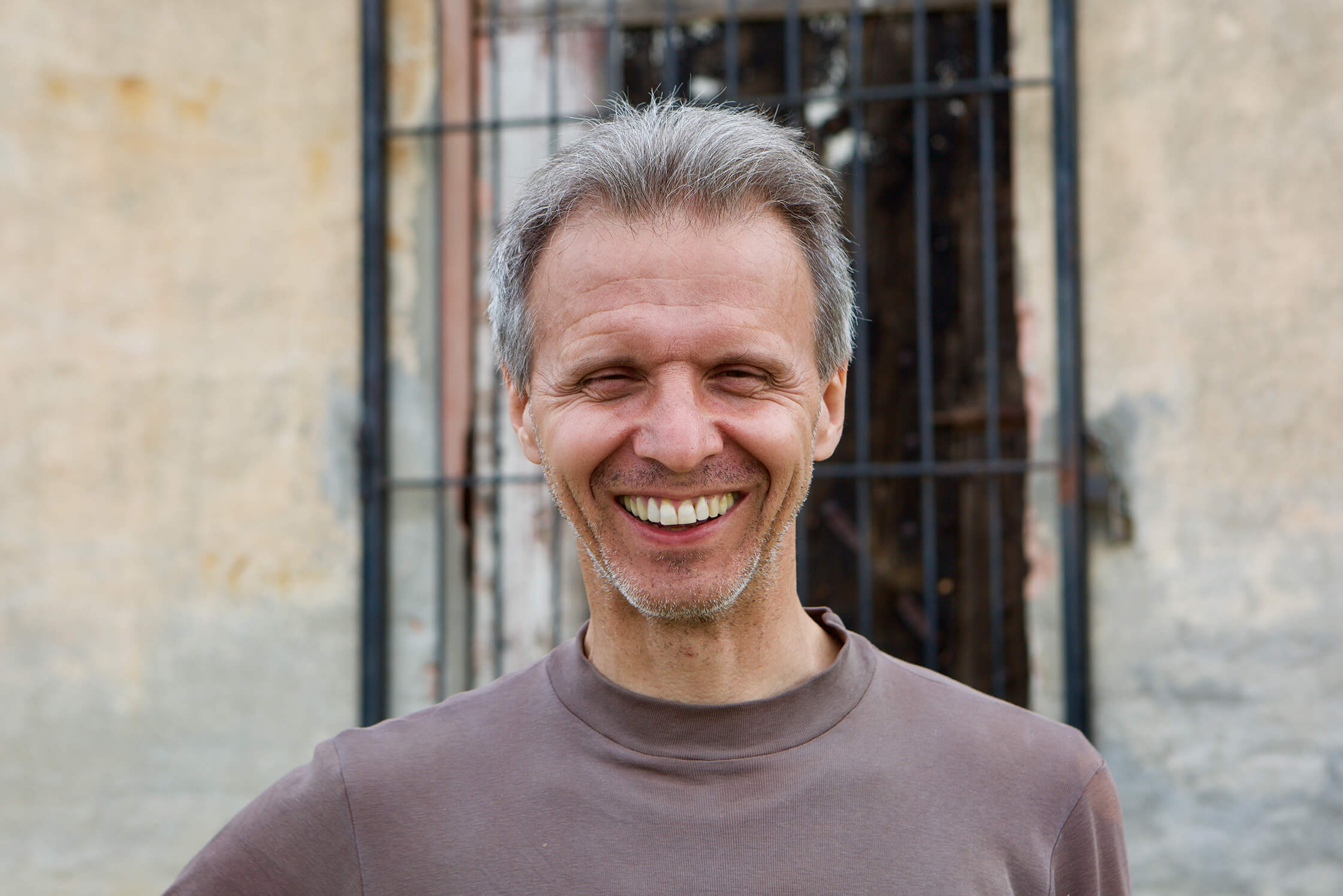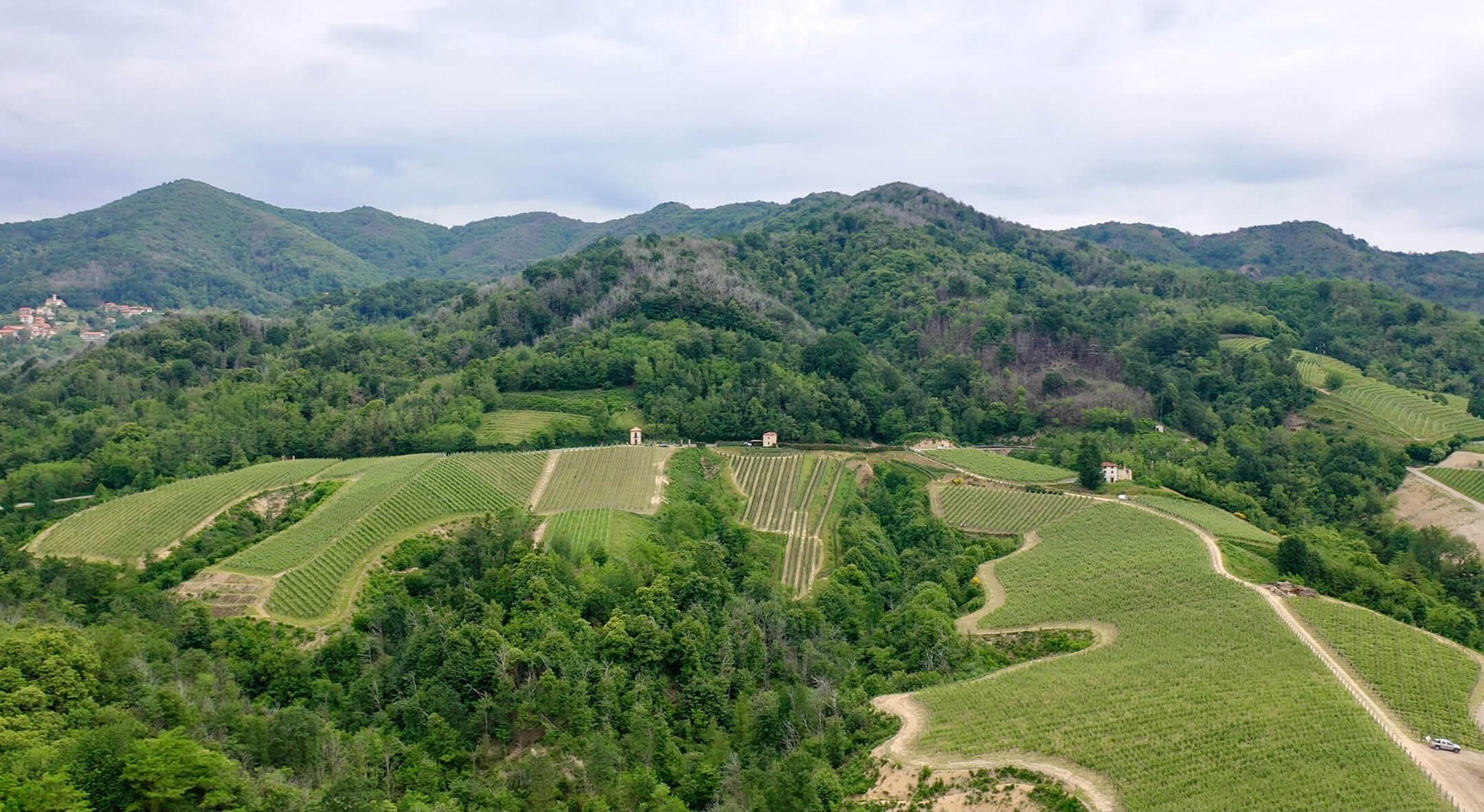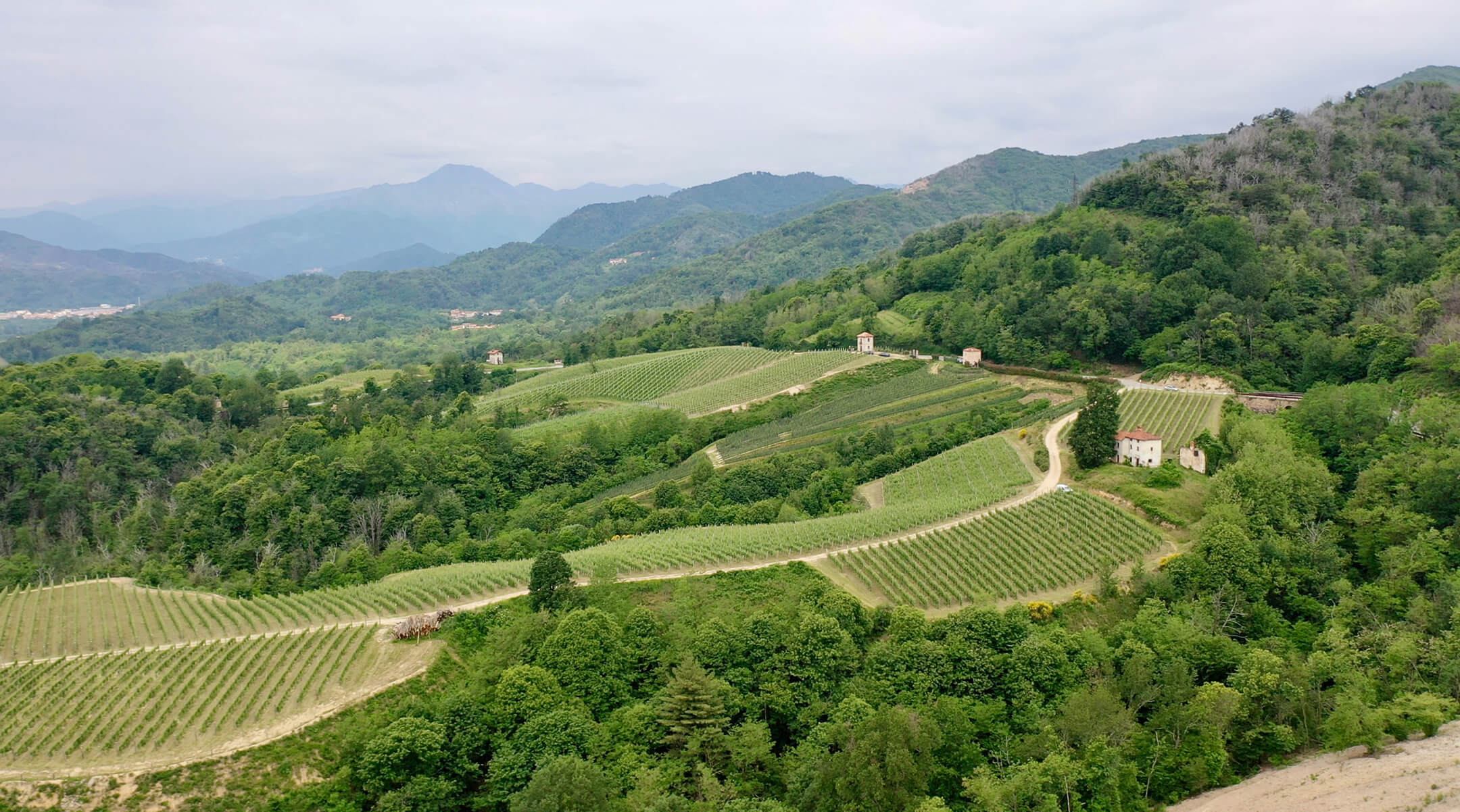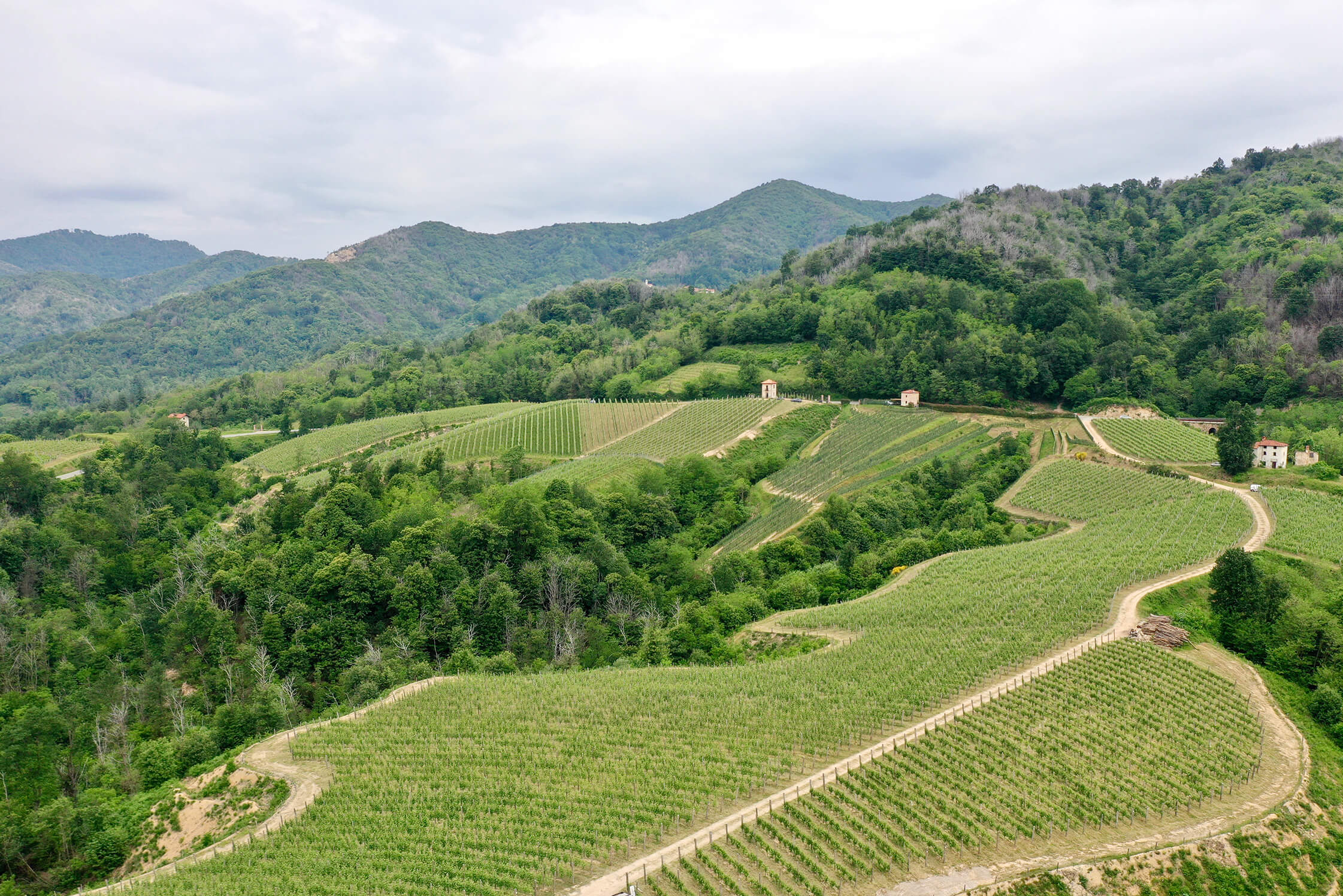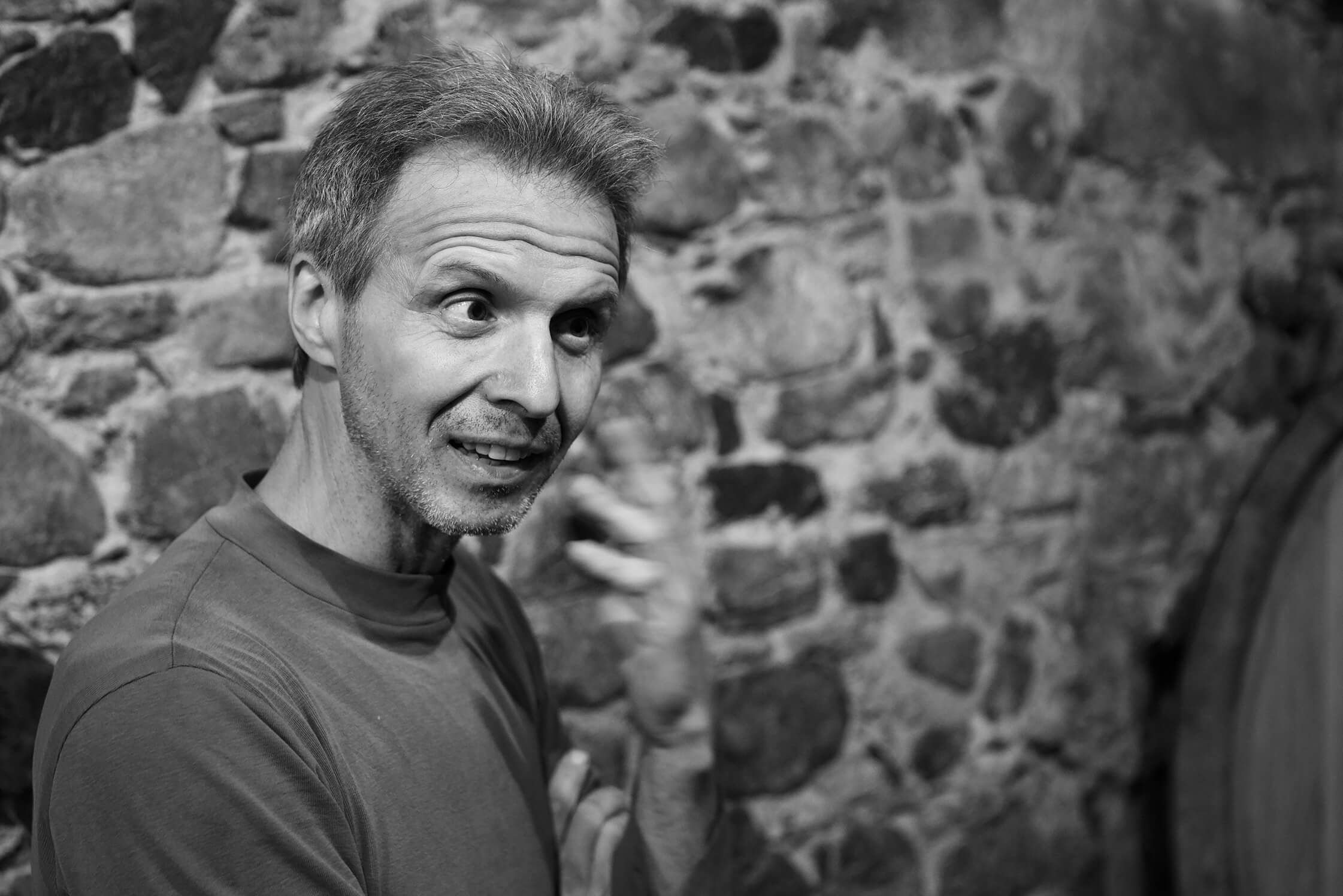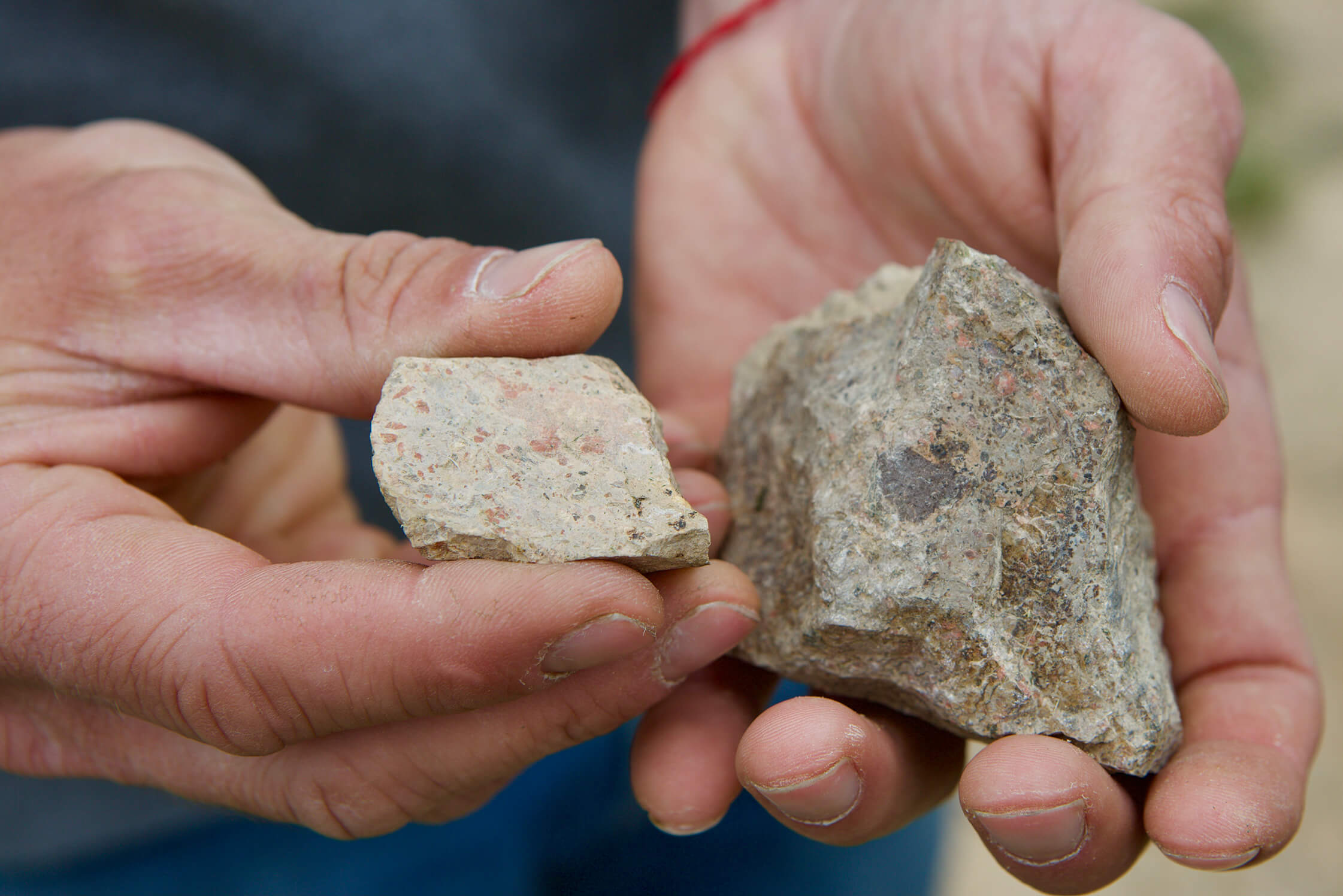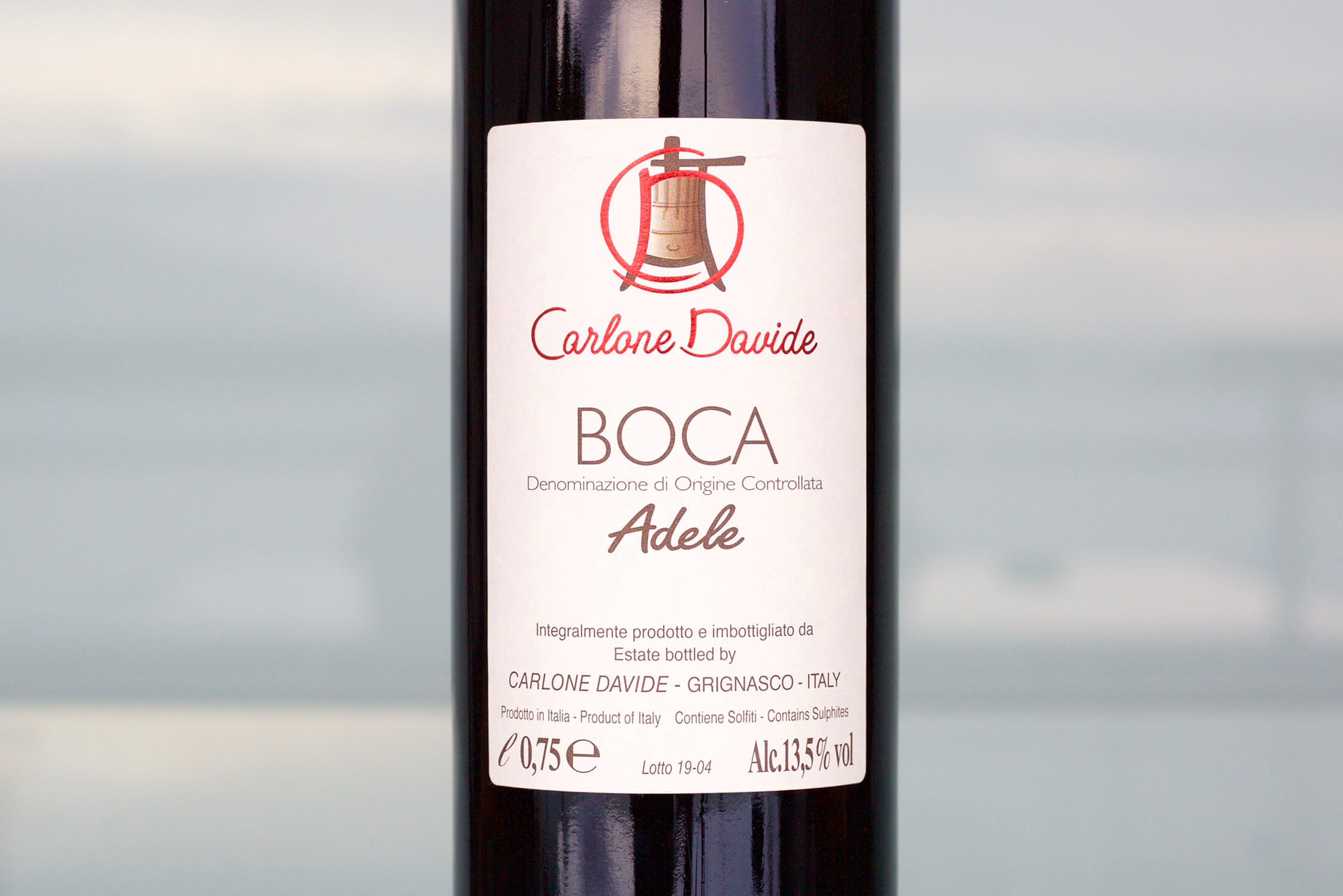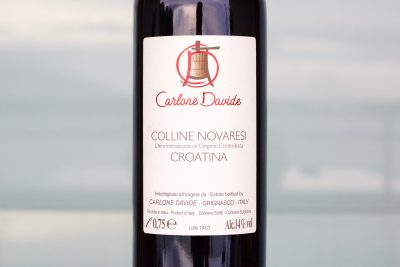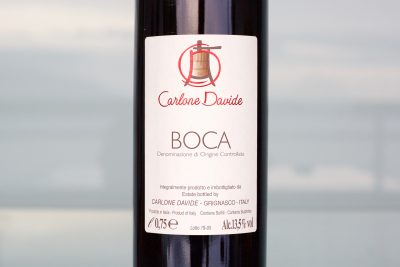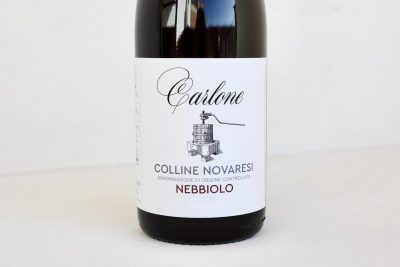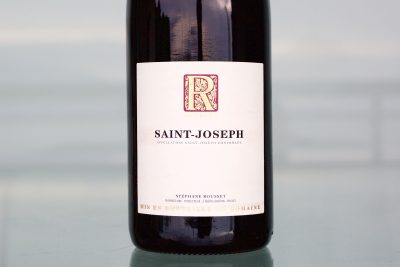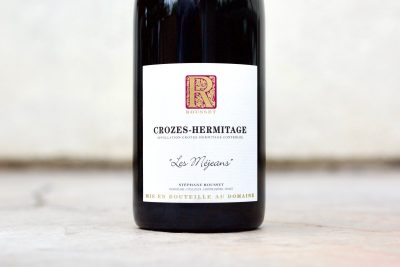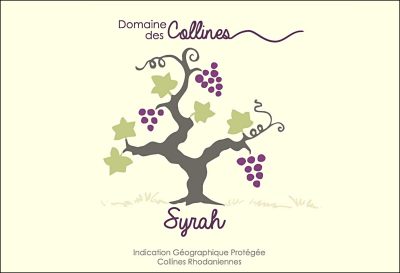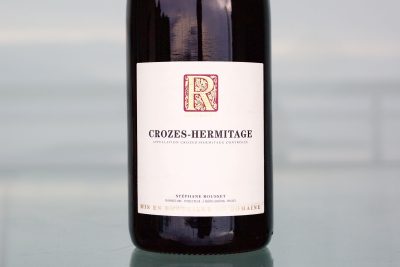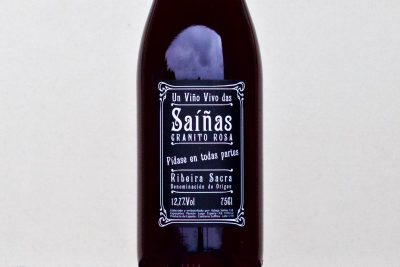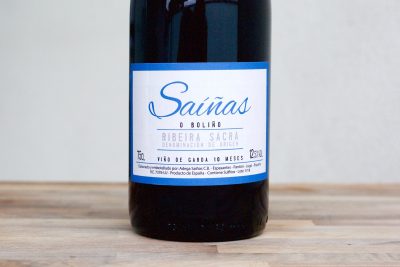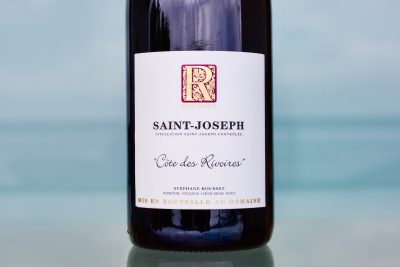Davide Carlone
Photography and writing by Ted Vance.
Davide Carlone is one of the most serious and important winegrowers in Piedmont. Based in Boca, a small appellation in Alto Piemonte, at the foothills of the Italian Alps, Davide’s focus is on Nebbiolo and the local supporting cast, Croatina (for which he may be the strongest advocate), Vespolina, and the cantina’s newest comer, Erbaluce. All the entry-level wines shine and as one goes up the ranks into the Boca appellation wine and then on to the vineyard selection Boca, Adele, the quality becomes apparent throughout the entire range. In the cellar, he works traditionally with larger old oak botti and extended aging for the top wines in the range and is well-known in the region for his extreme attention to detail in the vineyards; he stands as a model for the surrounding appellations.
The Shrinking Wine World
Some years ago, as we were in search of expanding our Italian imports, some of my contacts pointed me in the direction of Davide Carlone. Piemontese wine has long been a passion, and it is a region I have usually visited multiple times a year since my first visit in 2004. Nebbiolo became an obsession after some regular access to Giacomo Conterno’s Barolos back in the late 1990s. I waded my way through the avant-garde wines of the time, those that moved against traditional Langhe winemaking and into a more modern approach (rotary fermenters, new French barriques), which eventually led me to circle back to the more traditionally crafted, a style I somehow always naturally favored; perhaps it’s the revelation traditionally-made wines offer—they’re like drinking bottled culture.
Like everyone at that time (even Italian wine buffs), Alto Piemonte hardly existed, with the exception of some one-offs, like what was at the time an obscure but special producer from the minuscule Carema appellation, Ferrando. But even Ferrando’s beautiful wines were so elegant and lightly framed compared to those of the Langhe that they could easily get drowned out next to the thunder of the average Barolo or Barbaresco. The global resurrection of Alto Piemonte began back around the time that an unknown and very young Italian enologist started as a consultant at Tenuta Sella, Alto Piemonte’s most historic cantina in perhaps its most historically celebrated appellation, Lessona. Since then, Cristiano Garella has been the greatest driving force for the upward trajectory of the entire region from a global perspective. It was he who pointed me in the direction of Carlone, a suggestion that predated his seemingly inevitable collaboration with Carlone.
Of course, I never pursued Carlone out of respect for his importer at the time, a professional I know well enough and for whom I also have a great deal of respect. I had never met Carlone in person, but one day I received an unexpected email from his marketing and sales team inquiring if I knew the wines and would be interested in working with them in California. There was no romantic story, no hunt for the diamond in the rough—just plain luck that kept that message from being buried under a pile of spam.
The Great Disappearance
The mass abandonment of vineyards in Boca and the rest of Alto Piemonte was in its last stages after World War II. Imagine the region’s perfectly situated hills at the base of the Alps completely covered in vineyards, so many that at 40,000 hectares, it had more vineyard surface area than all of the 34,000 hectares of modern-day Champagne, but was reduced down to hundreds only decades ago; Boca had dropped to a mere three commercial hectares.
The decline began with a series of events that crushed the spirit of one generation after the next, starting in the mid-1800s with powdery and downey mildews (the latter known in Italian as peronospora), phylloxera, the root louse that ravaged every mainland European vineyard not planted on fine-grained sandy soils, forcing a complete replanting with American rootstocks grafted with European vine varieties. Then in Alto Piemonte, a hailstorm of biblical proportions hit in 1904 that obliterated their young crops. Despite these massive setbacks, Davide explained that between 1850 and 1920 there was still an enormous amount of wine produced in these areas. The people’s fight for their vinous history had yet to be extinguished.
After the series of demoralizing natural catastrophes, it was man’s turn to wreak havoc with the back-to-back World Wars that devastated the population along with any remaining economic strength and willpower of this ancient wine community. Even before the wars, a mass emigration had started, with many of the destitute Piemontese fleeing to South America in search of better fortune. Northern Italy, the new industrial center of the country, with Alto Piemonte sandwiched between Milan and Turin, lost almost the entirety of what remained of its vineyard workforce.
The Survivors
Some survivors of the wars remained in the area and still worked vineyard plots to provide wine for the family. It was their kids who went off to the cities in search of financial stability for the family and between the 1970s and 1990s almost everything in Boca was slowly abandoned with the eventual decline of the war generation. At that time, there were hardly any wineries at all, but many were still making their own private supply.
Davide’s grandfather, Carlo had a minuscule production but was still considered one of the bigger producers. He used to sell his wines in the nearby village, Valduggia, and the customers would bring their own botti to fill up at his cantina. Back then, the wines were sold by the botte and often delivered up into the mountains close to the Swiss border in Alagna Valsesia, a two-day journey fueled by the power of two horses, and back—a route that spanned sixty kilometers. Before WWII, it was a much greater journey because they didn’t have the roads that were later installed for easy movement along warring fronts.
Carlone told me that the idea of “bottling” wines was more of an aristocratic practice and more common in nearby appellations like Lessona and Masserano, where the aristocracy had a much greater presence. Bottled wine was more for prestige rather than a greater production or commercialization. They were to be sent off to faraway places to show the merit of their wines among the elites of European society. In Boca there were few aristocrats, and the wines were mostly produced for commoners whose daily work was labor-intense.
The Stewards of Boca
Davide Carlone was born in 1968, and at that time Boca was reduced to only a couple of hectares for commercial use. As a young boy, he worked in vineyards with his grandfather, Carlo, until he was sixteen years old. By the time Carlo was almost ninety, he quit working the vines and the vineyards were soon overtaken by forest—the same story everywhere in Alto Piemonte.
In 1988, during Davide’s spare time away from his family’s machine and metalworks business, he started to work a small vineyard that was left behind by his late uncle. In 1990, he rented another vineyard and the spark for his passion for grape growing lit a fire. His dream for the future was rooted in his childhood, when the old ones spoke of this land that was once so beautiful, so full of gorgeous vineyards that lined the Traversagna, the ancient road that crossed through the hills of Boca. It’s hard to imagine the region as covered in vines as it is now with forests, but it surely must have been breathtaking with the backdrop of the snow-capped Alps that often go rose-colored at sunset. Davide’s dream is to have the region recapture this glorious past.
As Davide began to restore more and more vineyards, many old winegrowers in the region started asking him to take over their work and keep their vineyards in good health. His recovery effort was paralleled by the arrival of Swiss national, Christophe Künzli, who in 1996 adopted the Boca vineyards of Antonio Cerri, a vignaiolo who had gotten too old to keep working his vines and making wine. Christophe’s global view as a former wine merchant in Switzerland impacted Carlone, giving him the push he needed to begin bottling his own wines. Today Künzli is perhaps the most famous producer in the appellation, and he continues to buy fruit from Carlone just as he has done since the beginning of his project. Together, the two became the unified voice of this historic but almost completely forgotten region.
Davide has continued his quiet rise and in the process developed a small cult-like following for those more familiar with Alto Piemonte. Slowly, he recovered more and more former vineyard land overgrown with forest throughout the appellation and has now amassed over eleven hectares planted (2021) with numerous biotypes for each of the varieties he grows.
The Garella Effect
Today, Davide works with our mutual friend and world-renowned enologist, Cristiano Garella. Carlone already made superb wines prior to Cristiano’s arrival in 2019, however, no matter how good wines are before Cristiano is involved, he finds new levels for everything which often result in wines with greater lift, more precise craftsmanship, and always a clear expression of terroir and the unmistakable cultural tastes of Italian wine. Sharp and always finding the humor in everything around him (especially the Italian culture itself), he’s perpetually committed to what the grower wants, and helps them to clarify their agenda. Davide acknowledges how respectful Cristiano is for his work, adding that “his influence and adjustments are very soft, with a greater focus on the refinement of the final blends of each wine and overall management of sulfur to make it most effective with the smallest amount needed.” Cristiano has also openly expressed his admiration for Davide and his impeccable farming and tireless commitment to his work, both as a winegrower and his second job in metalworks. Cristiano, the greatest global advocate for Alto Piemonte who now has a client in Boca, is yet another powerhouse the appellation needed to insure its meteoric rise in the coming years.
Lay of the Land
Boca and the rest of the neighboring appellations of Alto Piemonte sit at the base of the Alps, facing south toward the Arborio rice fields (a major contributor to the inconceivable number of mosquitoes constantly present in this humid wine region). There is much more precipitation here compared to the Langhe wine area to the south where lie the famous appellations of Barolo and Barbaresco. One upside is that the precipitation usually comes at the more desirable times of winter and spring, and much less during the late summer and early autumn months closer to harvest.
The range of vineyard altitude is highly variable in the area due to the elevated reliefs of some of the vineyard areas. There are many vineyards down on the Po Valley floor, but the best are reserved for the hills, mostly on rocky volcanic terrain, like Boca, Gattinara, and most of Bramaterra, and others, like Lessona, known for its unique orange and yellow volcanic marine sand, and Ghemme, a mix of glacial moraines and alluvium, both composed of materials brought down from the Alps first by way of glaciers long ago and later by the Sesia River.
Boca sits on the east side (left bank) of the Sesia and is shared between the communes Grignasco, Boca, and Prato Sesia. Most of the vineyards are tucked further back into the mountains away from the Sesia and experience a slightly cooler influence from the Alps. While many of the important local appellations mostly sit between 250-350 meters of altitude, with some up to 400, most of Carlone’s vineyards face south and range between 380-450 meters. Like many vineyards in the area, outside of important appellations like Gattinara and Ghemme, his vineyards are largely surrounded by forest and in constant contact with fresh alpine winds, making for wines with great tension and strong array of more savory characteristics rather than punchy fruit.
A Geological Quickie
Ancient volcanism and the Alpine orogeny built Alto Piemonte. Stimulated by the Eurasian and African tectonic plates collision (which is still happening today, but they began the Alpine orogeny some sixty million years ago—a quickie by geological standards), what we know as today’s Alps were thrust up from deep under the earth’s surface, including some rock formations that are thought to have been as far as fifty kilometers below the earth’s surface at one time. The oceanic crust of the northern end of the African plate began to subduct (dive underneath) the Eurasian plate. During this orogenic (mountain-building) event, Alto Piemonte’s volcanic terroirs were created during the latest stages of the Variscan orogeny (between 370-290 million years ago), and are known as the Valsesia Supervolcano (or, Sesia Magmatic System). There are other volcanic clusters from the same time period that were also uplifted with the Valsesia and are evident in many of Italy’s alpine wine regions, including other parts of Northern Piemonte, Lombardia, Trentino and Alto Adige (Südtirol).
Carlone’s vineyards are on the remnants of the Valsesia Supervolcano, and its rocks are commonly referred to as porphyry. This can be a confusing term to non-geologists because it’s in reference to the specific texture of a rock (which may even include non-volcanic components) classified as such due to having a mixture of large and fine-grained crystals. Their mineral makeup is unique to each area, and they take on many different colors. However, due to the large range of grain sizes they tend to similarly erode into sand and gravel.
In Carlone’s Boca vineyards, and in the neighboring appellations, Gattinara and Bramaterra, these porphyry rocks are more specifically known as rhyolitic ignimbrites: rocks left over after a volcano’s pyroclastic flows—a volcanic current that contains lava, ash, and gases. They have similar mineral makeup of the well-known, non-volcanic igneous rock, granite. Carlone’s vineyards have little to no influence from other formations or depositions, which means the vineyard topsoil is eroded from the underlying bedrock, making it a purely volcanic rock terroir. These rhyolitic ignimbrites are extremely acidic rocks with a high metal content. This presents a natural challenge for volume production due to metal toxicity that often makes flowering more difficult, and without flowers there is no fruit.
Terroir Influences on Taste
So how do some of the terroir factors of climate, altitude and geology in Boca influence the taste of Davide’s wine? It’s not easy to precisely say, but there are a few suggestions consistent with his style: Sandier soils with little or no clay tend to impart greater aromatic lift and with straighter and more precise, clean lines and less fat; naturally low yields may be partially due to difficult flowering caused by the high metal content in the soil, increasing concentration and vine energy into the fewer remaining grapes; higher altitude makes for later picking compared to lower altitudes zones, resulting in fresher but fully ripen grapes with lower potential alcohol and higher-toned fruit and floral aromas; acidic soils often highlight the perception of greater saltiness in wines compared to those from more alkaline soils (like the soils of Barolo and Barbaresco); and high metal content in the soil often seems to also reflect in the metallic impressions in palate textures and sometimes the nose. These are but a few things that precede all the other factors that go into a wine when considering the influence of the grape varieties and their differences between biotypes (there are indeed quite dramatic differences between Nebbiolo biotypes planted at Carlone’s vineyards), and the grower’s vineyard and cellar practices, and stylistic preferences. It’s complicated, but let’s press on!
The Vineyards
Cristiano Garella describes Davide Carlone’s precision work in his vineyards as nearly unparalleled in the region, and this view is shared by the entire wine community. Carlone’s vineyards are sculptural and tightly trimmed. When he’s talking about his work in the cellar, he always returns to the quality of what he does in the vineyard. His focus is simply to produce the best possible grapes and let them make the wine themselves. It’s a cliché, I know, but there is nothing truer in the wine world: a wine can only be as good as its grapes.
Davide works free of unnatural treatments such as herbicides, pesticides, or systemics in his vineyards and only the essential treatments of copper and sulfur, both permitted and necessary in all certified viticultural practices, organic, biodynamic, and “natural” practices (if one wants to have the plants produce any grapes at all). He is committed to ecologically inspired and organic conventions, though he does so without certification. The respect he has for life inside and around the vineyards is clearly evident inside the forest walls that surround them. He believes biodiversity is important to curb vine diseases, but he pointed out that in the past when bigger vineyard plots were abandoned, nearby smaller ones became much more difficult to manage, which created a domino effect on the region’s quantity of vines and the amount of work it took to manage them. Ultimately, this resulted in even a greater loss of vineyard surface area.
The Grapes
There are some ancient-vine grapes (older than eighty years, with some more than a hundred) that go into his production. Most are younger in his newly planted vineyards, and he uses numerous regional biotypes, all of which are lab “certified” as resistant against flavescence dorée (FD), a vine disease transported by leafhoppers with no known cure outside of a vine’s natural resistance. FD most often kills younger vines and if it doesn’t kill older vines, it severely reduces their productivity. (Read more about FD here.) None of the newly planted vines are considered true massale selections in the traditional sense. Without “certification” of plant material in a lab, most massale selections simply will not make it with FD present. Davide’s answer to this is to find strong vines with a natural resistance and send them to a lab for testing. If they prove resistant, they are cloned from there and planted in his vineyards—so, a massale of sorts, but not precisely.
Erbaluce
Davide’s new cellar was built in time to facilitate the processing of the 2020 vintage, the same year he produced his first commercial Erbaluce. This grape has been under experimentation at the cantina for more than a decade, with the 1,600 vines planted. He makes a short maceration before pressing, followed by a long fermentation under ambient temperatures without any manipulation, but he inhibits malolactic fermentation to retain more fresh acidity. Erbaluce can typically have a slight almondy bitterness in the back palate, a good contrasting quality for this grape that often has a slightly glycerol texture. It should be noted that some degree of bitterness is regularly present in Italian food and wine. When Italians use bitterness as a description, it’s usually meant as a positive element (unless it is in direct reference to tannins), as it is in the case of Erbaluce. It’s not highly aromatic when done with a natural fermentation (like Davide’s) but commonly expresses sage, white flowers, and other fresh green herbs. Those produced with commercial yeasts are often unnaturally fruity.
Croatina
There is no greater advocate for the Croatina grape in Alto Piemonte than Davide Carlone. Davide has a strong personal connection due to its relevance in Boca. Historically (at least in the most recent generations), Davide claims that Boca had the greatest level of Croatina in Alto Piemonte, perhaps due to its reliability and potentially higher production. He told me that his most vivid childhood memories of vineyards are centered around Croatina. One could suppose that a grape variety like Croatina, which produces more powerful, color-rich, heart-warming reds, were probably a more welcome winter drink up in Boca and further back into the Alps than the paler colored and tense Nebbiolos and Vespolinas.
Croatina is a very resistant grape to mildew and other diseases, but the vine itself is sensitive. However, in contrast to the other two red grapes in Davide’s range, it can be planted virtually everywhere and thrive. It’s a later-ripening grape than Nebbiolo and quite the opposite in many ways, particularly with its naturally rustic, spicy and earthy characteristics, dark color, and a different tannin profile. Some typical characteristics of Croatina are its lower acidity, tendency to be more reductive, and a pronounced tannic structure due to its naturally bigger body and frame. It’s fruitier and more herbal, and Cristiano Garella describes its organoleptic properties of Croatina from Alto Piemonte as, “Wild, minty, black, oily like chocolate butter, with nutmeg and nuts, peanuts, blackberries, balsamic characteristics and iron.” Carlone’s varietal bottling of Croatina is fermented for ten to twelve days in stainless steel and also aged in stainless steel until bottling with no fining.
Vespolina
Vespolina is a fascinating grape with a bright future. Fortunately for us, between Carlone and Ioppa (another producer we work with from Ghemme) they make gorgeous versions that can rival their Nebbiolo wines. One of the genetic parents of Nebbiolo, Vespolina is a better performer in drier, well-drained soils (the sand and gravel of Boca are its friends), has bright acidity, usually 1-2g/L higher than Nebbiolo, a lower pH, and a beautifully original and noble aroma of white pepper (due to the rotundone molecule, the same found in Syrah or Grüner Veltliner, and in white and black pepper). Davide explained that the grape cluster is delicate and more affected by problems such as mildew, whereas the vine itself is more resistant to diseases. There are two registered biotypes of Vespolina in Alto Piemonte, but he has found some older biotypes in both his old vineyards and those of Le Piane, which he uses for all his new Vespolina plantings.
When Vespolina is ready for picking the seeds are normally green, so it’s typical to have some green tannins and bitterness in the back palate. Vespolina is often done with short fermentations resulting in wines with lighter tannins, but Davide does the opposite when needed. It ranges between eight to fourteen days, depending on the year. He prefers longer fermentations to allow the wine to move past its primary fruitiness which also helps the tannins to polymerize further with the extended skin and seed time in contact with more oxygen through the extended fermentation/maceration times. For the varietal bottling of Vespolina (not the proportion that goes into the Boca wines), it is aged only in stainless steel, so Davide works against the tannins using an extended fermentation because the stainless steel offers very little assistance with tannin polymerization (softening). He has only 0.6 hectares but is planting more which will increase his total surface area of around one hectare (2021).
Nebbiolo
The principal grape variety in Boca is Nebbiolo, which was historically called Spanna in Northern Piemonte. Nebbiolo is perhaps the pickiest of all the grapes regarding its place in a vineyard, always requiring a more southerly aspect, but as a variety it’s very resistant to vine diseases and the clusters are also resistant to mildew. Until recently, Carlone worked with eight different biotypes, mostly the Picotener 423 (Donnas), 415 (Pont San Martin/Val d’Aosta), 308 (Carema); Michet 66, 71 (La Morra, Barolo); and Lampia 142 (Neive, Barbaresco) 142, but with the newer plantings there will be eleven in production (2021) with local biotypes from Gattinara, Ghemme, Lessona, and Boca. Cristiano said that Nebbiolo biotypes most commonly planted in the 1970s (mostly in Langhe because in Alto Piemonte vineyards were being lost and not replanted) were higher yielding with likely less color. In the 1990s, the biotype focus was to meet the market demands for bigger wines that needed higher natural sugar levels and ripeness to produce wines with a greater “wow” effect in tastings for journalists and the general global customer who valued power over elegance. Over the last few decades, there was a swing toward biotypes with higher aromas and higher acidity (probably because the producers could see climate change before it became a front-and-center issue). It’s easier to understand the differences between biotypes from different regions through their natural aroma, tannin, and acid profiles. For a general characteristic viewpoint, the Picotener biotypes from the border of Piemonte and Val d’Aosta are more elegant while the Michet and Lampia from the Langhe tend to be more powerful. (For a quick look at Nebbiolo biotypes and how they may influence a wine click here.)
Boca in Botti
The main game at Carlone is Boca. A spice rack of different Nebbiolo biotypes (minimum of 85% at Carlone) and Vespolina, both go through spontaneous fermentations on the skins (fully destemmed) for around a month for the Nebbiolo, and the Vespolina for 14-18 days. After pressing, the wine is aged in 25hl Slovenian oak botti for eighteen months and then prepared for bottling. The first Boca wine is released no sooner than three years after the vintage date. The different biotypes from all over Piemonte give this wine a great breadth of complexity, allowing it to hit a broad chromatic range of octaves from tenor to baritone to bass, all in wonderful harmony. However, the biotypes with bigger structure (mostly from the south, in Langhe) are reserved for this wine.
Boca Adele, named after Davide’s grandmother and his niece, is the higher toned of the two Boca wines. It is made the same way as the Boca appellation wine and is the same blend of 85% Nebbiolo and 15% Vespolina but is mostly composed of the Picotener family of Nebbiolo biotypes which impart more elegance and softness to the wine than the clones from further south. Adele’s final blend is always decided by blind tastings, but Davide and Cristiano always favor the Picotener biotypes (particularly 423 and 415, which they describe as having wild fruit with a greater retro nasal finish and a stronger vibrancy that lingers longer on the palate) which ultimately make up the lion’s share of the blend. It’s a refreshing hallmark of some producers in Alto Piemonte, particularly many who work with Cristiano, that the top wines are often the most elegant and even lowest in alcohol, whereas many regions continue to place the “bigger” wines at the top of their hierarchy.[cm_tooltip_parse] -TV [/cm_tooltip_parse]
Davide Carlone - 2019 Boca, Adele
Out of stock
Vallelonga is the flagship of this dingy-sized operation. It is indeed a small cantina but mighty, like its appellation. What is most striking about Nebbiolo grown in the soil of Lessona is its subtle and equally substantial aromas that are unlike any expression I’ve experienced with this varietal. It hits all the markers expected from Nebbiolo (rose, tar, anise and great structure) but here they transcend the weight and power of the Langhe with an angelic rise of elegance from the glass—especially whenever Northern Piedmont’s maestro enologist, Cristiano Garella, is involved. A very well-respected wine writer once mistakenly lumped Lessona into the mix of all of northern Piedmont Nebbiolo wines as “a rather less pure form than a great Barolo.” This oversight is easy to make if a Lessona is tasted next to its local brethren, or to a Barolo where it’s like putting a ballerina in the ring with a boxer.
Famous Italian wine writers of the late 1800s and early 1900s considered Lessona wines the greatest reds in all of Italy, and in the right hands it can represent one of the most pure expressions of Nebbiolo. The weight and power of Nebbiolo from further south (in the Langhe) often overwhelms the senses when compared to Lessona’s hyper-detailed and intricately refined expression. Lessona’s volcanic soil, with its metal and mineral streak in the palate, is impossible to miss, and the grape is equally obvious. It could be the Chambolle-Musigny of Piedmont, and no one who knows and drinks (not only tastes) Burgundy would dare ding one because of its finesse and purity. Like Lessona, some of the greatest Chambolle-Musignys can get lost in the context of bigger wines and can be better served alone.
Fabio’s Coste della Sesia Nebbiolo grapes are entirely grown within the Lessona appellation, but due to an archaic technicality, it’s not labeled as such because the winery it’s made in sits only fifteen feet over the border of Lessona and primarily in Coste della Sesia appellation, so it can only be labeled as a Costa della Sesia; it’s obvious that a wine should be labeled by the origin of their grapes, not the location of the cellar it was crafted in. (I apologize for the repetition of this paragraph if you’ve read Fabio’s profile as well.)
The details: Fermentation in stainless steel for over three weeks, followed by aging in old 225 liter barrels for thirteen months. Fermentation is spontaneous and the use of sulfites is kept to a minimum—only 30ppm at bottling, which is near half the average for handcrafted, boutique fine wine. The vines are a mix of young and old, with the average close to twenty-five years.

